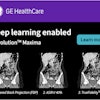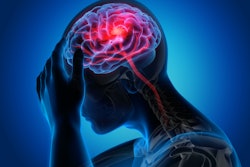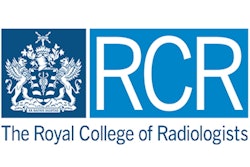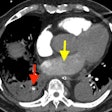Radiomics features culled from CT images of the perithrombus region of the brain improve the prediction of intracranial hemorrhage (ICH) after endovascular thrombectomy (EVT), researchers have reported.
The study findings could help clinicians make better postprocedural decisions, wrote a team led by Dr. Minda Li of the Affiliated Hospital of Nantong University in China. The results were published on 27 July in the European Journal of Radiology.
"The initial clinical evaluation of acute stroke patients necessitates rapid imaging, and certain radiological findings on CT scans have been associated with a higher risk of ICH after EVT," the group noted. "However, the assessment of these CT features is often subjective and dependent on radiologists, focusing on limited aspects of the thrombus and perithrombotic [blood-brain barrier]. This highlights the need for improved predictive tools to accurately identify patients at higher risk for ICH following EVT."
Stroke is the second leading cause of mortality around the world, and EVT is the gold standard for treatment of LVO strokes, Li and colleagues explained. But the procedure does come with a common complication -- intracranial hemorrhage -- and predicting which patients might be at higher risk of it could lead to safer treatment strategies, they wrote.
"Most acute stroke patients with anterior-circulation LVO [large vessel occlusion] benefit from EVT to varying degrees, but the risk of ICH remains a critical factor in clinical decision-making," the group wrote.
Li's team assessed the predictive performance of CT-based radiomics features extracted from thrombus regions via a study that included 336 individuals who underwent CT imaging and endovascular thrombectomy for acute anterior-circulation LVO between December 2018 and December 2023. The patients had follow-up imaging 24 hours after EVT to identify any incidence of intracranial hemorrhage and the researchers tracked medical record data such as patient age, sex, comorbid conditions (hypertension, diabetes, hyperlipidemia, atrial fibrillation, and coronary artery disease) and smoking history.
Radiologists manually segmented the thrombus on CT images, then the researchers chose 428 radiomics features from the intrathrombus and perithrombus regions on CT images to train and test a combined model. Of the total patient cohort, 230 were allocated into training and test groups (ratio, 7:3) while the remaining 106 patients made up a validation cohort. The investigators assessed the model's performance using the area under the curve (AUC) of the receiver operating characteristic (ROC).
Of the 336 patients, 128 (38.1%) experienced intracranial hemorrhage after endovascular thrombectomy. The model showed the following AUC values:
| Performance of combined radiomics model for predicting intracranial hemorrhage after endovascular thrombectomy | |
|---|---|
| Cohort | AUC |
| Training | 0.91 |
| Test | 0.87 |
| Validation | 0.85 |
This radiomics model shows promise for improving the care of stroke patients, according to Li's group.
"[Our] findings underscore the potential of CT-based radiomics in optimizing EVT and improving patient outcomes," the team concluded. "Future work should focus on multicenter validation and incorporating deep learning methods to enhance predictive accuracy."
The complete study can be found here.




















